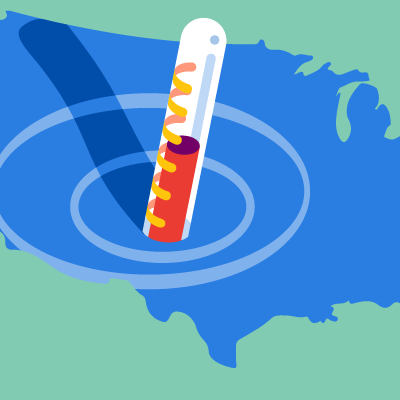I recently blogged about how natural catastrophes can contribute to outbreaks of disease in a limited geographic area by damaging infrastructure, displacing people, and hampering the function of public health programs. In this post we will look specifically at one of the most problematic perils in terms of disease spread: flooding. Flooding is present in about 40% of natural disasters; it can be associated with hurricanes, tsunamis, storm surge, or heavy rainfall over a period of time.
Mosquitoes and Sewage
One of the primary effects of severe flooding is that it forces people to relocate, often to crowded shelters where diseases can quickly spread. Another is damage to water systems, especially sewage treatment and water purification systems, which can spread sewage and contaminated soils across large areas, exposing whole populations to infectious material, both during and after floods. When sewage mixes with drinking water or contaminates shellfish, diarrhea and dysentery often follow. These may seem like nuisance health problems, but they are the primary cause of mortality in evacuee and refugee camps (40% of all deaths). Large increases in disease were reported after the 2004 Bangladesh flood and the 2000 Mozambique floods.
Outbreaks of water-borne diseases can also occur in people displaced by other disasters, such as earthquakes. In some areas impacted by the 2004 tsunami in Indonesia, all available wells were contaminated, leading to more than 85% of the population in the town of Calang, for example, reporting diarrheal symptoms. The cholera outbreak that followed the 2010 earthquake in Haiti sickened more than 170,000 people and led to 3,600 deaths. Contaminated water can also spread hepatitis A and E.
Flooding can also contribute to outbreaks of vector-borne diseases, particularly diseases spread by mosquitos, which breed in stagnant pools of water.
These are not just problems in underdeveloped countries. In the U.S., the flooding of New Orleans after Hurricane Katrina in 2005 led to a number of health issues. These included both toxigenic and non-toxigenic cholera outbreaks, and a norovirus outbreak among evacuees and relief workers in Houston. There were also outbreaks of diarrheal disease among evacuees in Louisiana, Tennessee, and Mississippi. Tropical Storm Allison in Texas (2001) produced a similar pattern of gastrointestinal outbreaks. In both events, initial reports indicated that floodwaters contained 100 times the escherichia coli (e. coli) concentrations found in normal river runoff.
Wounds and Infections
The vibrio genus of bacteria, which live in brackish water, cause several types of gastrointestinal diseases and can spread widely in coastal flooding events. This genus includes vibrio cholerae, the bacteria that causes cholera, but they can also cause soft tissue infections. After Katrina, the Centers for Disease Control and Prevention (CDC) reported increased mortality from vibrio infections—about 60% from soft tissue wounds infected with the bacteria leading to septicemia, and 40% caused by the consumption of contaminated shellfish. Of note in these cases is the fact that vibrio had not been reported prior to the hurricane and was not considered endemic to the New Orleans area.
Wounds are not communicable diseases, but the combination of traumatic injuries from the primary event and the subsequent exposure to contaminated water or soil caused many more cases of severe infections than would otherwise occur. The 2004 Aceh tsunami in Indonesia also caused a related condition known colloquially as “tsunami lung”—pneumonia caused by contaminated soil in the lungs from near drowning during the acute tsunami event—which can take up to six weeks to develop into pneumonia and include neurological symptoms. While neither of these conditions can be spread to others, they do add to the overall disease burden on whatever limited healthcare resources are available.
Estimating Risk
Even areas that are normally arid can be subject to flooding, as recent events in California have shown. Some models of the effects of climate change indicate that sudden, torrential rainfall may become increasingly common in some areas. Rising sea levels also make coastal flooding a bigger threat. There is a great degree of uncertainty around when a disease outbreak from a catastrophe will occur. Stochastic methods can help capture this inherent uncertainty and provide a method for estimating the probabilities of various outcomes. It is also important to note that while countries that have more fragile health and safety support networks may be more vulnerable to disease during catastrophic events like floods, even developed countries are at risk for unexpected and potentially severe adverse health events, which add complexity and expense to disaster response.



